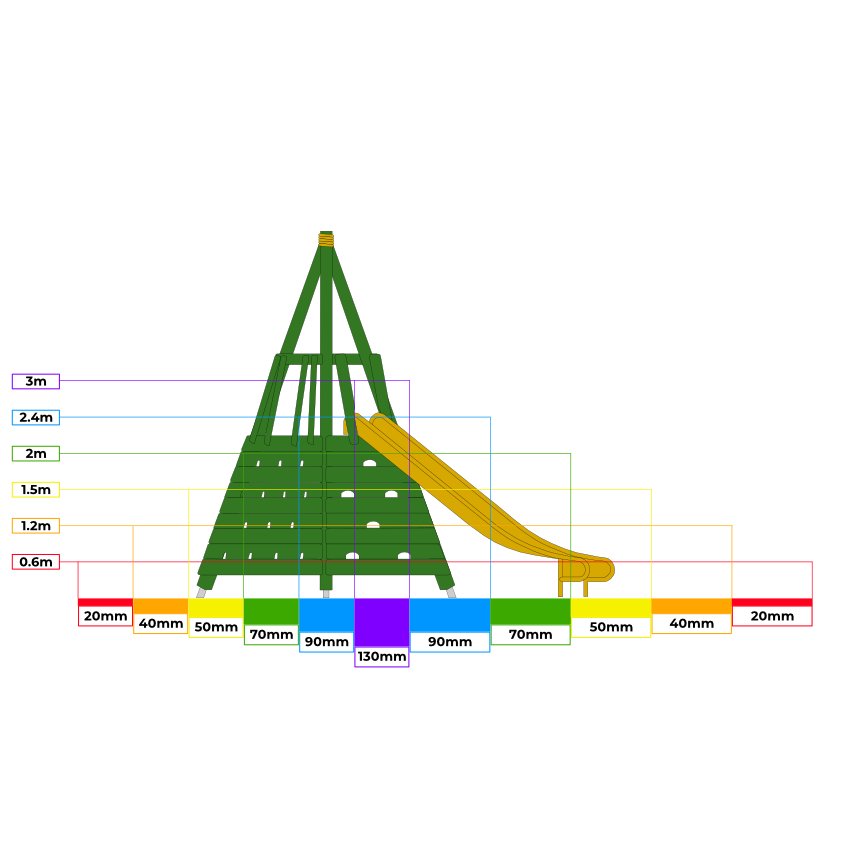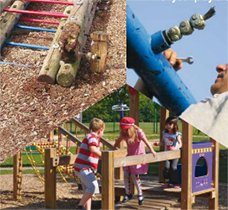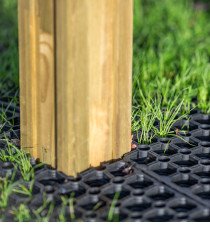Talking About... Critical Fall Height
Published 31/01/24Why is Critical Fall Height so important when considering play equipment

Injuries caused by falls from playgorund equipment occur for a variety of reasons, but the most severe injuries are likely to be injuries to the head. This is why it is so important that surfacing depth and critical fall heights are understood and adhered to when choosing new playground equipment and surfacing.
So what is Critical Fall Height? In short, it's the maximum free height of fall for which a surface will provide an acceptable level of impact attenuation. This therefore dictates the thickness of sufacing required to lower the risk of injury. This means the higher the height, the deeper the surfacing. This is demonstrated by the infographic above and is tested by evaluating the shock absorbing qualities of soft surfaces.
Safety surfaces should extend from the edge of the equipment by at least the same distance as the CFH. For example if the CFH of a multiplay platform is 2 metres, then the surfacing should extend at least 2 metres in each direction, as well as being a minimum of 70mm thick.
Whilst safety surfaces do not prevent injury, when properly installed they can significantly reduce the liklihood of serious injury. Although they are not a legal requirement they are recommended by safety organisations such as RoSPA, BSI, NPFA and CAPT. When installed they should meet BSEN1176 which is the British Standard for surfacing.
Visit our Surfacing pages for more information on the different types that are available.




